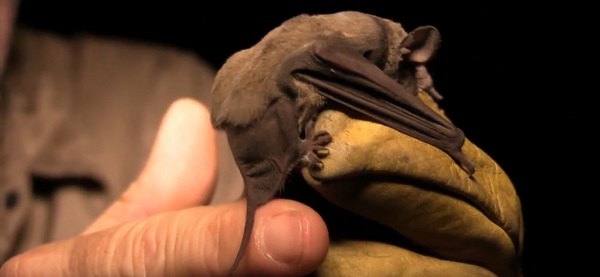The Mexican freetail bat is also called the Brazilian free-tailed bat. This is a bat that falls in the average size for
bats and is one of the most abundant of all mammals in North America. Despite having extremely large numbers, this bat
has faced serious issues with survivability of some roosts at times, because they live in such large numbers together.
Frequently there may be only 20 or 30 roosts in North America, so if one or two is disturbed or exterminated by human
beings then this can have a dramatic impact on the overall population of this bat’s population. It is for this reason
that the populations like California and Utah have been declining over the past twenty years.

This bat is about 3.5 inches in length and weighs nearly one-half of one ounce. The tail of the bat is about half of its overall size.
Its ears allow it use an echolocation system that helps it ready find prey through use of this mammalian form of sonar. Most of these
bats are either really dark brown or gray. The wings of the Mexican free tail bat are elongated with pointed tips at the end of the wings.
This gives them the ability to make quick and straight flight patterns.
This bat is primarily found from the southern half of the United States through to South America. In fact, it is most commonly found in Mexico,
with the largest known colony near San Antonio, TX. That colony has nearly 20 million bats to it. A truly astounding number!
These bats primarily live in caves, but some have been known to use the top floors of abandoned buildings or in the walls of large buildings.
What is the primary concern for those bats is that there is sufficient enough space on the ceiling of the cave or building to handle the bat
population.
These bats are insectivores, eating primarily bugs such as moths, dragonflies, wasps, beetles, flies, and ants. Most of the insects are caught
by the bat while they are in flight. These bats can fly hundreds of yards off of the ground, thus allowing them to reach insects at various
altitudes. Predators to the bat include the possum, the hawk, owls, kites and raccoons. These animals also can be killed by many common
pesticides, making their populations decrease rapidly. These animals are nocturnal that begin to look for food just after dusk and can
fly as far as 30 miles in one night.
Go back to the
How Do You Get Rid of Bats in Buildings home page or email me for more information about Biology of Mexican Freetail Bat: Appearance, biology, life cycle, habitat, diet, behavior